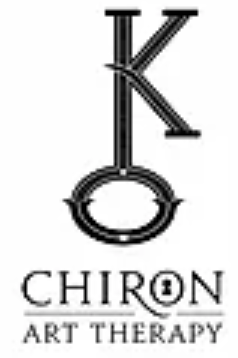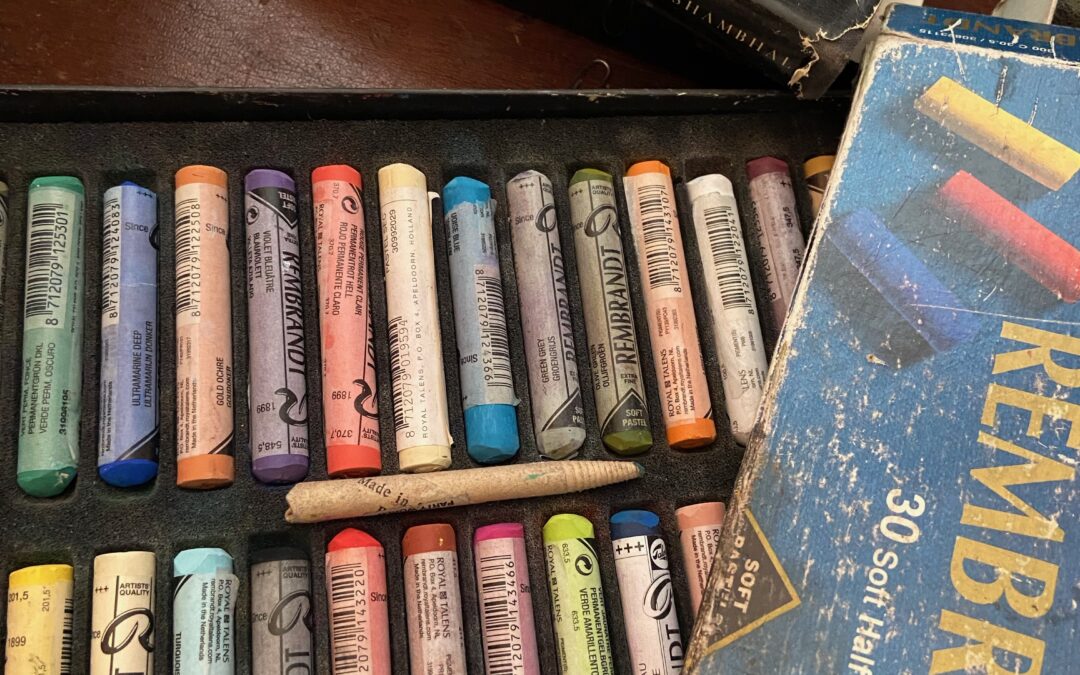As part of my internships in graduate school at Florida State University, I completed 2 semesters of art therapy at a hospice with bereavement and anticipatory grief work. One of the most powerful experiences was my final session with one of my clients and his final image. This blog post details a case study utilizing a Jungian approach to art therapy for palliative care.
A Case Study – Jungian Art Therapy for Palliative Care
One of the most touching art therapy sessions I ever held was with someone who was in his 90’s. He was an accomplished plein aire pastel artist. Plein aire is a French term for art done outside. He had been very sick for a long time an
d hadn’t made any art for several years, possibly a decade, before due to depression and later, illness.
So when he found out there was an art therapist at the hospice, he exclaimed, “Oh I have to do art therapy! I must meet this person, I need her!”
In our first session, he gave me a tour of his home and studio, which was full of his artwork. He hurried with his walker and oxygen tank, his soft words full of pride and excitement to be sharing this part of his soul with me. At the end of our tour, he went to lie down to rest from the exertion of his efforts.
Art Therapy for the Artist
Because of his background, I had to approach things very differently than how I approach a typical client who does not have an art background. If I didn’t come to the table from a fine art perspective, he wasn’t going to take me seriously. He needed me to be an expert as well.
Silencing the Inner Critic
My main goal for him was for him to put away the formal artist critique. I encouraged him to engage with the art-making process and enjoy the materials as a way to not criticize himself.
This was hard for him! It took him a while to silence the internal critic. When he did, he began to enjoy his engagement with art again.
Art Therapy at Work
I saw him every week for about 2 and a half months. I brought in still life stuff like flowers, fruit–anything alive. This was because he was not well enough or mobile enough to go outside to draw. I brought the life into him.
The Final Session – Jungian Art Therapy for Palliative Care
For the last session I did with him, he shook things up a bit by bringing a printout of a photo that he wanted to work on. I got everything set up for him, as he was so weak that he can’t hold his arm up to reach into the pastel box to pick out a pastel to use. I would bring the box to him and put it next to his lap for him to tell me which color he wanted, and I would put it into his hand because his hand was too heavy for him to lift. He worked feverishly for 60 minutes straight.
The image was from a photo that one of his children had taken of cliffs by the ocean, with the sun streaming through the clouds, and the waves crashing along the rocks at the base of the cliffs. He was falling asleep as he was finishing the piece, so I take the materials out of his hands. Then, he woke up a little bit and looked at the piece that I propped up for him to see. The nursing aide returned, to help him maneuver or get anything he might need to keep him comfortable.
He looked up to the aide and tells her, with pride in his voice, “This one is good. I want to frame this one.” He fell back asleep, exhausted.
On the Image in Art Therapy
I was taken the whole time while he worked by this striking image and the underlying symbolic meaning. Let me detail a few bits that informed me for Jungian art therapy for palliative care. From a Jungian perspective, land (mater) is the mother, each person walking through life given by the archetypal mother. The ocean is the collective unconscious. Likewise, the cliffs are the steep drop off between life and then return to the unconscious and the collective via death. This process relinquishes the ego and individual consciousness at the time of death.
The sky and the light may be indicative of a sky-father god or logos or spirit. Thus this image shows the threshold between the individual reaching a precipice at the end of the life journey. There, consciousness meets with logos with the unconscious depths.
The whole experience illustrated the last stage of the hero’s journey. In this case, I saw the artist’s Herculean effort that it took to answer the creative urge. Death’s brother, morphos overtakes the artist at the end of his art-making session.
A Moment of Synchronicity
Afterward, I went to my car and cried outside his house. I was so moved by the experience of witnessing and holding space for that amazingly awesome, and archetypal event to occur. As I cried, in an act of synchronicity, it started raining through the sunlight.
Synchronicity is something that happens in the outer world that, because of its timing, or content, strikes a chord of personal significance for the person experiencing the event.
Therapy According to Jung
From a Jungian perspective, the therapeutic container, held by the clinician with reverence and presence is something that Jung called temenos, which is Latin for sacred space. The therapeutic session in time and a secure space conjures symbolic images of the womb, the mother’s embrace, and the ouroboros, a snake eating its own tail. Finally, symbol conjures the image of the mystical stance of the ceremonial magician’s magic circle, where man, who is made in God’s image, brings forth images into manifestation through the act of creation.
I didn’t get to see my client again. That was his final art piece and he died 6 days later. We didn’t have to discuss the meaning of the artwork. I don’t know who received a greater gift that day, for I’m going to carry that treasure with me for the rest of my life. Jung also said,
The meeting of two personalities is like the contact of two chemical substances: if there is any reaction, both are transformed. We should expect the doctor to have an influence on the patient in every effective psychic treatment; but this influence can only take place when he too is affected by the patient (Jung, 1933).
Dream and Art Images
This is the beauty of the work that I do through the translation of the dream image or art image in jungian art therapy for palliative care as well as other individuals.
Final Thoughts on Healing with Art
Through the archetypal image, both the therapist and the client are transformed. In the therapeutic process, the client heals and the therapist foster’s the client’s growth towards wholeness. My patient who increased his energy levels through healing his relationship with art. Other clients likewise find their own insight, inspiration, increased energy. Through creative engagement with art in art therapy, they create more generative relationships. Learn more about art therapy here.
Jung, C. (1933). Modern Man in Search of a Soul. KJLR, Apple Books. https://books.apple.com/us/book/modern-man-in-search-of-a-soul/id662287838

